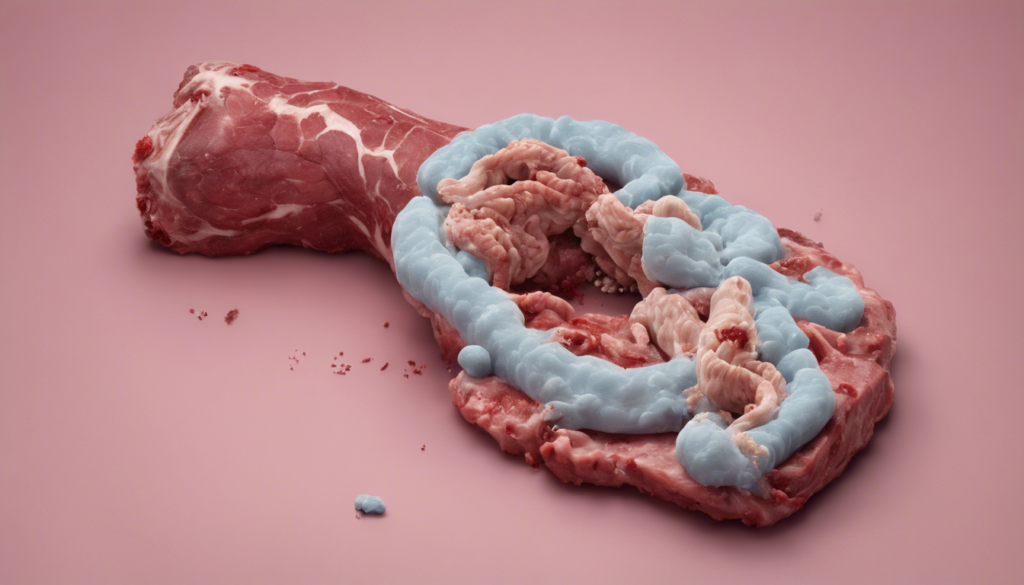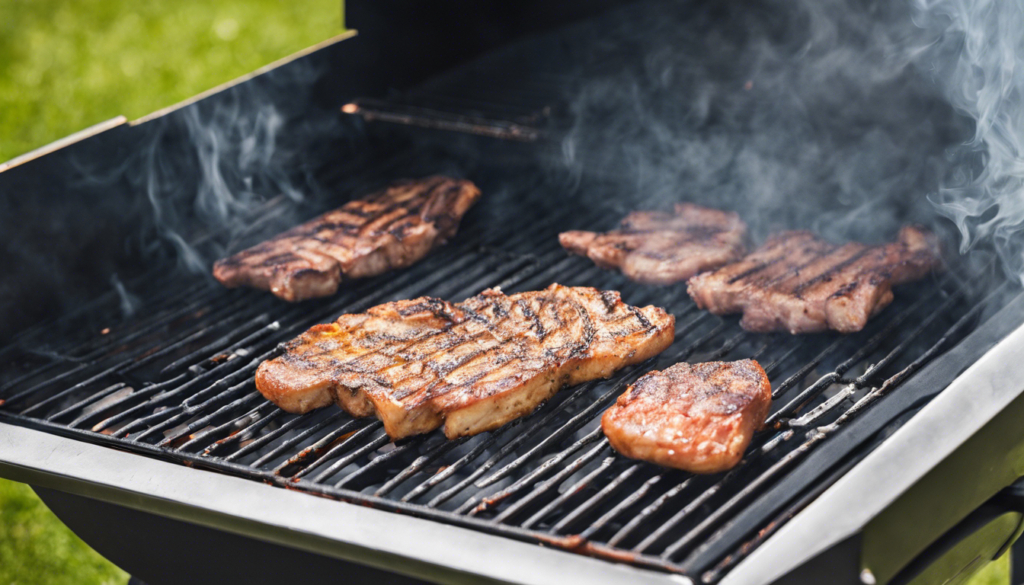Microbial Impact: Does Smoking Meat Kill Bacteria?
From backyard barbecues to gourmet restaurants, smoked meat is a delicacy enjoyed worldwide. But beyond its tantalizing aroma and rich flavor, there’s a crucial question to consider: does smoking meat kill bacteria? Understanding the microbial impact on smoked meat is not only vital for food safety but also for ensuring the quality and taste of the end product.
As meat lovers, we often overlook the microscopic world that resides within our favorite cuts. However, knowing how smoking affects bacterial growth can help us avoid foodborne illnesses and enhance the overall dining experience. This article will delve into the science behind smoking meat, the types of bacteria commonly found in meat, and the safety measures needed during the smoking process.
So, grab your apron, and let’s embark on a gastronomical journey that balances flavor, safety, and science!
Understanding Bacteria in Meat
Before we dive into the smoky depths, it’s essential to understand the bacterial world within our meat. This invisible ecosystem can significantly affect the quality, safety, and flavor of our food.
Types of Bacteria Commonly Found in Meat
Meat, especially raw, can harbor various bacteria, including Salmonella, E.coli, Campylobacter, and Listeria. These bacteria can cause foodborne illnesses if the meat is not properly cooked or handled. It’s important to note that these bacteria are not visible to the naked eye, so one cannot determine the safety of meat based solely on appearance.
| Bacteria | Illnesses Caused |
|---|---|
| Salmonella | Salmonellosis |
| E.coli | E.coli Infection |
| Campylobacter | Campylobacteriosis |
| Listeria | Listeriosis |
How Bacteria Affects Meat Quality and Safety
Bacteria can significantly impact the quality and safety of meat. For instance, bacteria can cause spoilage, leading to a change in color, odor, and texture of the meat. Moreover, certain bacteria can produce toxins that can cause food poisoning, even if the bacteria themselves are killed during cooking.
Understanding the role of bacteria in meat is essential for implementing proper cooking and handling techniques, such as smoking, to ensure the safety and quality of the meat.
The Process of Smoking Meat
Smoking is an age-old technique used to preserve and flavor meat. But how exactly does it work? Let’s delve into the traditional and modern methods of smoking meat.
Traditional Methods of Smoking Meat
Traditional smoking involves using hardwood logs, chips, or pellets to generate smoke. The meat is placed in a smoker or a grill and cooked at low temperatures for several hours. This slow-cooking process not only kills bacteria but also breaks down tough connective tissue, resulting in tender and flavorful meat.
Modern Techniques in Smoking Meat
Modern smoking techniques have evolved to include electric and gas smokers. These devices offer more control over temperature and smoke levels, making them easier to use, especially for beginners. However, some barbecue enthusiasts argue that these modern methods don’t deliver the same depth of flavor as traditional smoking.
The Science Behind Smoking Meat
Now that we understand the process, let’s dive into the science behind smoking meat. How do heat and smoke contribute to killing bacteria and enhancing flavor?
The Role of Heat in Smoking Meat
Heat plays a crucial role in smoking meat. It’s the heat that cooks the meat and kills the bacteria. However, smoking involves cooking at low temperatures (around 225°F) for a long period, unlike grilling, which uses high heat. This low-and-slow method ensures that the meat is cooked thoroughly without getting burnt or dried out.
The Role of Smoke in Smoking Meat
Smoke, on the other hand, is responsible for the characteristic flavor of smoked meat. The smoke infuses the meat with various compounds that give it a rich, smoky taste. Moreover, smoke also has antimicrobial properties that can help inhibit bacterial growth.
Bacterial Impact on Smoked Meat
So, how does smoking meat affect bacterial growth? And what factors influence bacterial survival in smoked meat? Let’s find out.
How Smoking Meat Affects Bacterial Growth
Smoking meat can significantly reduce bacterial growth. The heat from smoking kills most bacteria, while the smoke can inhibit the growth of any surviving bacteria. However, it’s important to note that smoking alone may not kill all bacteria, especially if the meat is not smoked at the right temperature or for the correct duration.
Factors Influencing Bacterial Survival in Smoked Meat
Several factors can influence bacterial survival in smoked meat, including the type of bacteria, the temperature and duration of smoking, and the handling and storage of the smoked meat. For instance, some bacteria can survive at high temperatures, while others can grow at low temperatures, such as in the refrigerator.
Does Smoking Meat Kill Bacteria?
Now, to the million-dollar question: does smoking meat kill bacteria? Let’s look at what science says and debunk some myths and misconceptions.
Scientific Evidence on Smoking Meat and Bacteria
Scientific studies have shown that smoking meat can kill most bacteria. However, the effectiveness of smoking in killing bacteria depends on several factors, including the temperature and duration of smoking. Therefore, it’s important to follow proper smoking techniques to ensure the safety of the meat.
Myths and Misconceptions about Smoking Meat and Bacteria
One common misconception is that smoking meat kills all bacteria. While smoking can kill most bacteria, it may not eliminate all, especially if the meat is not smoked properly. Another myth is that smoked meat can be stored indefinitely without refrigeration. While smoking does extend the shelf life of meat, it does not make it immune to spoilage, and proper storage is still necessary.
Safety Measures in Smoking Meat
Given the potential risks, what safety measures should we take when smoking meat? Let’s explore the proper preparation of meat for smoking and the safe smoking temperatures to kill bacteria.
Proper Preparation of Meat for Smoking
Proper preparation of meat for smoking is crucial for food safety. This includes thawing the meat properly, marinating it in the refrigerator, and avoiding cross-contamination between raw and cooked meat. Moreover, the smoker should be preheated to the right temperature before adding the meat.
Safe Smoking Temperatures to Kill Bacteria
The safe smoking temperature to kill bacteria depends on the type of meat. For instance, poultry should be smoked at a minimum internal temperature of 165°F, while beef, pork, lamb, and veal should be smoked at a minimum internal temperature of 145°F. Using a meat thermometer can ensure that the meat reaches these safe temperatures.
Health Risks Associated with Smoked Meat
While smoked meat can be a delicious treat, it’s important to be aware of the potential health risks associated with improperly smoked meat and how to minimize them.
Potential Health Risks from Improperly Smoked Meat
Improperly smoked meat can pose several health risks, including foodborne illnesses caused by bacteria such as Salmonella and E.coli. Moreover, smoked meat can contain harmful substances like polycyclic aromatic hydrocarbons (PAHs) and heterocyclic amines (HCAs), which are formed during smoking and have been linked to cancer.
How to Minimize Health Risks When Consuming Smoked Meat
To minimize health risks when consuming smoked meat, it’s important to follow proper smoking techniques and safety measures. This includes smoking meat at the right temperature and for the correct duration, avoiding cross-contamination, and storing the smoked meat properly. Additionally, consuming smoked meat in moderation can also help reduce health risks.
The Role of Preservation Techniques in Controlling Bacteria
Beyond smoking, there are other preservation techniques that can control bacteria in meat. Let’s take a look at these techniques and compare them with smoking.
Other Preservation Techniques to Control Bacteria in Meat
Other preservation techniques to control bacteria in meat include curing, drying, canning, and freezing. These methods work by creating conditions that are unfavorable for bacterial growth, such as removing moisture, lowering temperature, or adding preservatives.
Comparing Smoking with Other Preservation Techniques
Compared to other preservation techniques, smoking offers the added benefit of flavor enhancement. However, smoking alone may not be sufficient to preserve meat for long periods, and it’s often used in combination with other methods, such as curing or refrigeration, for better preservation and safety.
Conclusion: The Balance Between Flavor and Safety
Smoking meat is a culinary art that balances flavor and safety. While the heat and smoke can kill most bacteria and enhance flavor, proper techniques and safety measures are crucial to ensure the quality and safety of the smoked meat.
Whether you’re a barbecue enthusiast or a casual meat lover, understanding the microbial impact of smoking meat can enhance your smoking experience and ensure a safe and delicious meal. So, the next time you fire up your smoker, remember that you’re not just cooking meat—you’re controlling a microscopic world that can make a big difference in your food.
References
References used in this article are available upon request. Please contact the author for more information.


